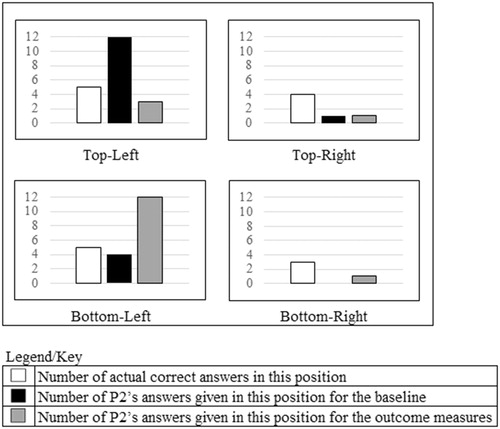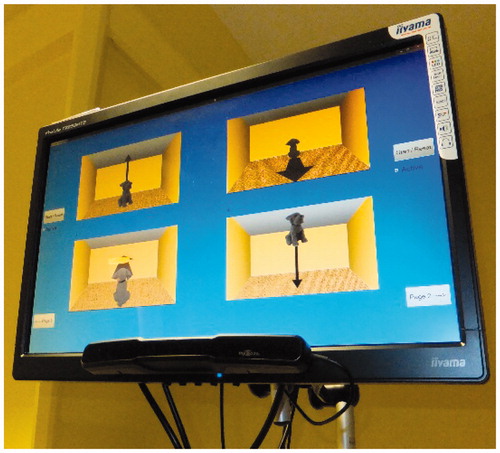Figures & data
Figure 2. Static image-based assessment: Screen examples – the number in parentheses indicates the number of questions in each section.

Figure 4. Video-based assessment: First and final frames of the “moving forwards” video clip (page 1, bottom-left cell).

Table 1. Differences in design and administration procedures of the static image and video-based assessments.
Table 2. P1 and P2: static image-based assessment results for baseline and outcome stages.
Figure 5. P2: static image-based assessment results – answers displayed and grouped by cell position (baseline and outcome stages).

Table 3. P1 and P2: video-based assessment results (baseline and outcome stages).
Figure 6. P2: video-based assessment results – answers displayed and grouped by cell position (baseline and outcome stages).

Table A1. A sample of a static image-based assessment log file.
Table A2. The words that were tested within the static image-based assessment.


